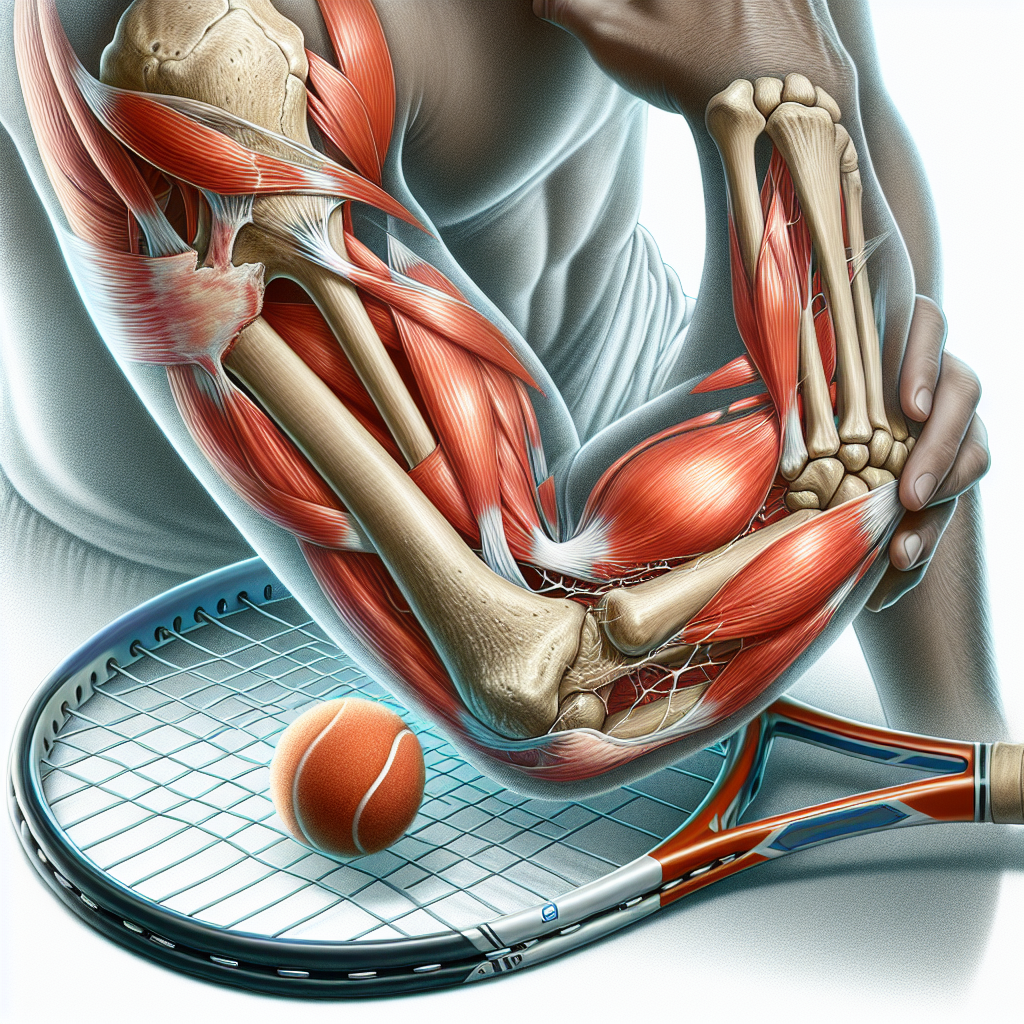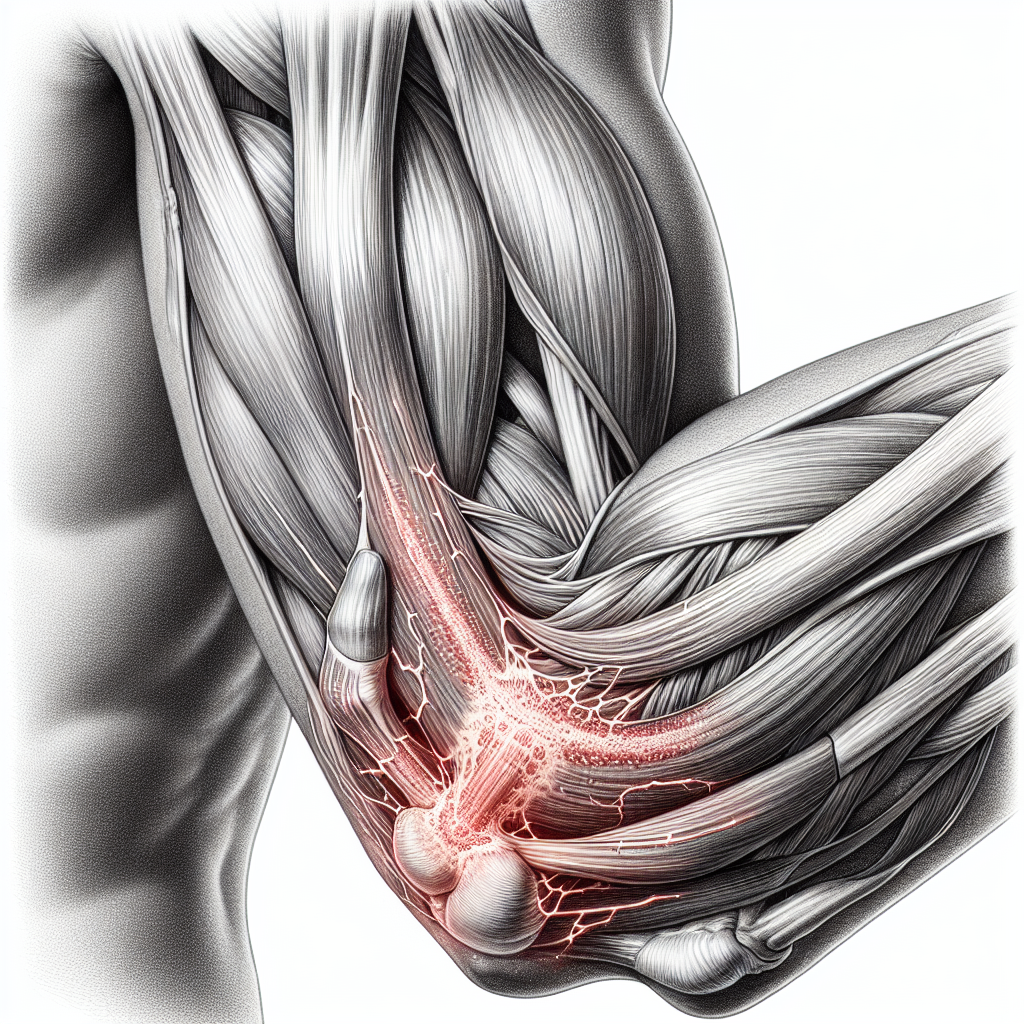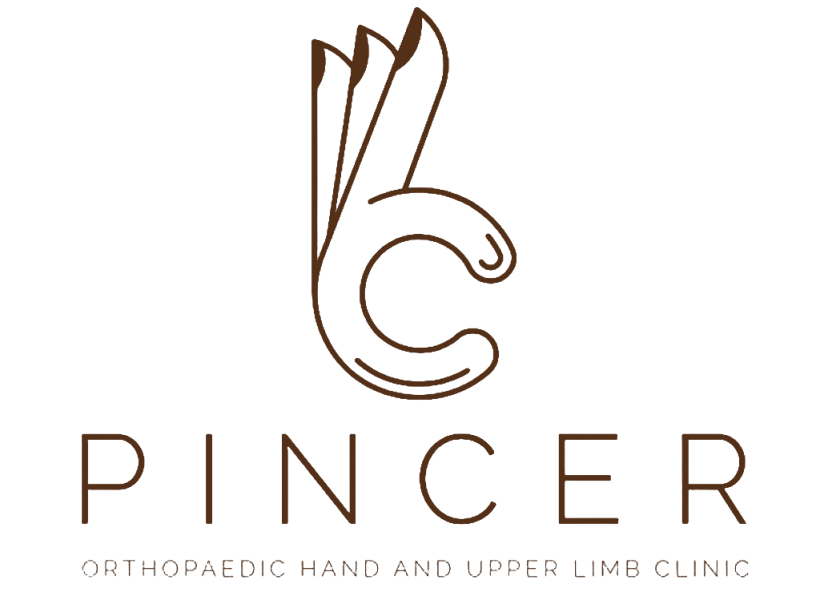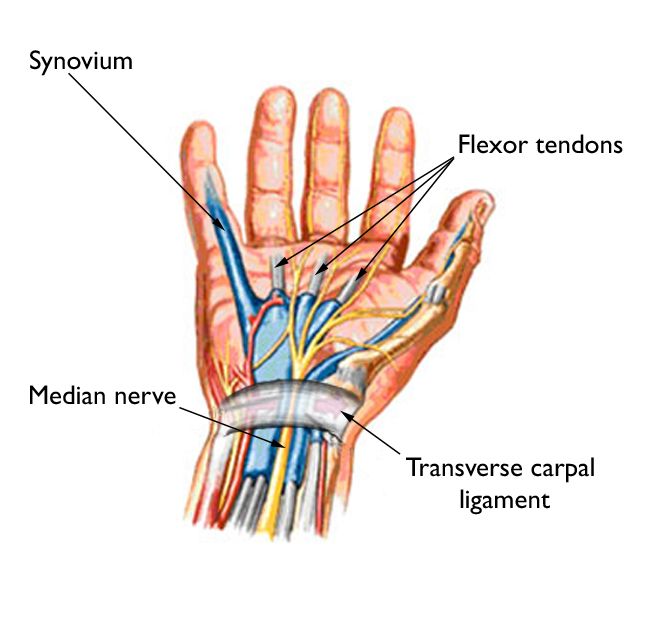Dr. Sathya Vamsi Krishna
Hand, Upperlimb & Reconstructive Micro-Vascular Surgeon,
Brachial Plexus & Peripheral Nerve Surgeon, Bengaluru
MBBS, MS Orthopaedics, European Diploma in Hand Surgery
FHS (NUS, Singapore; CMC Vellore; Institute Kaplan)
Effective Tennis Elbow: AComprehensive Guide to Relieving Pain and Restoring Mobility
What is tennis elbow?
Tennis elbow, or lateral epicondylitis, is a painful condition that affects the muscles in the elbow joint. Despite its name, this injury isn’t limited to tennis players; it can occur in anyone who engages in repetitive motions that strain the forearm muscles and tendons. The primary culprit is the overuse of the extensor carpi radialis brevis (ECRB) tendon, which attaches to the bony protrusion on the outside of the elbow.
The constant strain on this tendon can lead to inflammation, micro-tears, and, ultimately, pain and discomfort. Tennis elbow is a common injury among athletes (Racquet Sports), manual labourers, and individuals whose jobs or hobbies involve repetitive wrist and arm movements, such as painters, carpenters, and even computer users. In India, we commonly see this in homemakers involved in everyday household chores. However, tennis elbow causes can be idiopathic.
For an avid tennis player, the experience can be debilitating. The pain can be excruciating, making it difficult to perform even the simplest tasks, let alone engage in the sport you love. However, with the right approach, tennis elbow is a treatable condition, and restoring mobility and alleviating pain is achievable.

Understanding the symptoms of tennis elbow
Recognizing the symptoms of tennis elbow is crucial for seeking prompt treatment and preventing further injury. The most common symptoms include:
- Pain and tenderness on the outside of the elbow, often radiating down the forearm. The tennis elbow pain location can be specific to the bony protuberance on the lateral elbow.
- Weakness in the grip and difficulty grasping or lifting objects
- Stiffness and decreased range of motion in the elbow and wrist
The pain associated with tennis elbow can range from mild discomfort to severe, debilitating agony. In some cases, the pain may worsen at night or when attempting to grip or twist objects.
It’s important to note that the symptoms can develop gradually or appear suddenly, depending on the severity of the injury and the individual’s activity level. If left untreated, tennis elbow can become chronic and lead to further complications, such as muscle atrophy and permanent loss of mobility.
Diagnosing tennis elbow: The tennis elbow test
If you suspect you may be suffering from tennis elbow, it’s essential to seek a proper diagnosis from a healthcare professional. Your doctor will likely perform a series of tests to determine the extent of the injury and rule out other potential causes of elbow pain.
One of the most common diagnostic tests for tennis elbow is the “tennis elbow test.” This test involves the following steps:
- Extend your arm with your palm facing down and your wrist bent slightly backwards.
- Use your other hand to gently apply pressure to the area near the bony protrusion on the outside of your elbow.
- If you experience pain or tenderness in this area, it may indicate the presence of tennis elbow.
- Certain specific tests such as Cozens or Milch tests are helpful where wrist extension is tested against resistance.
Your healthcare provider may also recommend imaging tests, such as X-rays or MRI scans, to rule out other conditions like arthritis or fractures. MRI scan is useful to confirm tears and rule out other intraarticular problems like PLICA.
Tennis elbow treatment options
The good news is that tennis elbow is a treatable condition, and there are various options available to alleviate pain and restore mobility. The most appropriate treatment plan will depend on the severity of your injury and your individual circumstances. Here are some common treatment options:
- Rest and activity modification: Resting the affected arm and avoiding activities that exacerbate the pain is crucial in the early stages of recovery. Your healthcare provider may recommend taking a break from sports or activities that involve repetitive wrist and arm movements.
- Over-the-counter medications: Anti-inflammatory drugs, such as ibuprofen or naproxen, can help reduce inflammation and alleviate pain. However, it’s essential to consult with your doctor before taking any medication, as prolonged use may have side effects.
- Physical therapy: Working with a physical therapist can be highly beneficial in treating tennis elbow. They will design a personalized exercise program to strengthen the affected muscles, improve flexibility, and promote healing. Techniques such as ultrasound therapy, electrical stimulation, and massage may also be incorporated into the treatment plan.
- Corticosteroid injections: In some cases, your doctor may recommend a corticosteroid injection to reduce inflammation and provide temporary pain relief. However, these steroid injections should be used judiciously, as they can potentially weaken the tendon if used excessively.
- Platelet-rich plasma (PRP) therapy: This Platelet-rich plasma regenerative therapy involves injecting a concentration of the patient’s platelets into the injured area to stimulate healing and tissue repair. PRP therapy is gaining popularity as a potential treatment for chronic tendon injuries like tennis elbow.
- Braces or supports: Wearing a tennis elbow brace or support can help alleviate stress on the affected tendon and promote healing by providing counter-support. Alternatively, a wrist brace is helpful to relax the injured ECRB muscle avoiding wrist flexion. These devices are designed to compress the muscles and tendons, reducing inflammation and pain.
- Extracorporeal shock wave therapy (ESWT): This non-invasive treatment involves delivering low-energy shock waves to the affected area, which can help stimulate healing and reduce pain. ESWT is typically recommended for chronic cases of tennis elbow that haven’t responded to other treatments.
- Surgery: In rare, severe cases where other treatments have failed, surgery may be recommended to remove damaged tissue or repair the torn tendon. However, this is generally considered a last resort due to the risks and recovery time associated with surgery. There are various surgical options reserved for high-demand individuals or for those not responding to therapy and steroid injections. Choosing the proper technique is important. Surgical options include open and arthroscopic surgery that can discussed by a treating Hand surgeon nearby,
It’s important to note that the recovery process can be gradual, and it may take several weeks or months to experience significant improvement, depending on the severity of your injury and your adherence to the treatment plan.
Tennis elbow self-care techniques
In addition to seeking professional treatment, there are several self-care techniques you can incorporate into your daily routine to manage tennis elbow and support the healing process:
- Apply ice or cold therapy: Applying an ice pack or cold compress to the affected area for 15-20 minutes several times a day can help reduce inflammation and alleviate pain.
- Engage in gentle stretching: Performing gentle stretching exercises can help improve flexibility and prevent further injury. Be sure to consult with your healthcare provider or physical therapist for appropriate stretches.
- Use over-the-counter topical creams or gels: Topical creams or gels containing ingredients like menthol or capsaicin can provide temporary relief by reducing inflammation and promoting blood flow to the affected area.
- Practice stress management techniques: Stress can exacerbate pain and hinder the healing process. Incorporating relaxation techniques like deep breathing, meditation, or yoga into your routine can help manage stress and promote overall well-being.
- Modify your activities and ergonomics: If your job or daily activities involve repetitive wrist and arm movements, consider modifying your workstation or techniques to reduce strain on the affected area. This may include using ergonomic tools, taking frequent breaks, or adjusting your posture.
Remember, self-care techniques should be used in conjunction with professional treatment and under the guidance of a healthcare provider for optimal results.

The benefits of using a tennis elbow brace or support
One of the most effective and widely recommended treatment options for tennis elbow is the use of a tennis elbow brace or support. These devices are designed to provide compression and support to the affected area, reducing strain on the injured tendon and promoting healing.
Here are some of the key benefits of using a tennis elbow brace or support:
- Pain relief: By applying gentle compression to the affected area, a tennis elbow brace can help alleviate pain and discomfort, allowing you to perform daily activities with greater ease.
- Reduced inflammation: The compression provided by the brace can help minimize swelling and inflammation, which are common contributors to tennis elbow pain.
- Improved blood flow: Some tennis elbow braces are designed to promote increased blood flow to the affected area, which can aid in the healing process and reduce recovery time.
- Support and stabilization: The brace provides additional support and stabilization to the elbow joint, reducing the risk of further injury and allowing the tendon to rest and heal properly.
- Adjustable compression: Many tennis elbow braces feature adjustable straps or compression pads, allowing you to customize the level of support and compression to your specific needs.
When using a tennis elbow brace or support, it’s important to follow the manufacturer’s instructions and consult with your healthcare provider or physical therapist to ensure proper fit and usage. Wearing the brace during activities that aggravate your symptoms can help prevent further injury and promote healing.
Tennis elbow exercises for pain relief and mobility restoration
Incorporating targeted exercises into your treatment plan can be highly effective in managing tennis elbow and restoring mobility. However, it’s crucial to consult with a healthcare professional or physical therapist to ensure you’re performing the exercises correctly and not exacerbating your injury.
Here are some commonly recommended exercises for tennis elbow:
- Wrist extensor stretches: These stretches target the muscles and tendons involved in tennis elbow, helping to reduce tension and improve flexibility.
- Wrist flexor stretches: Stretching the muscles on the opposite side of the forearm can help promote balance and reduce strain on the affected area.
- Eccentric exercises: These exercises involve slowly lengthening the muscle while contracting against resistance, which can help strengthen the tendon and promote healing.
- Isometric exercises: These exercises involve contracting the muscles without movement, which can help reduce pain and improve strength without putting excessive strain on the tendon.
- Grip strengthening exercises: Exercises that target grip strength, such as squeezing a stress ball or using a hand grip strengthener, can help improve overall forearm and wrist strength.
It’s important to start with gentle exercises and gradually increase the intensity and duration as your condition improves. Your healthcare provider or physical therapist can guide you through a personalized exercise program and provide modifications as needed.
Preventing tennis elbow: Tips and strategies
While tennis elbow is a common injury, there are several steps you can take to reduce your risk and prevent its occurrence or recurrence:
- Proper technique and form: Whether you’re playing tennis, engaging in manual labour, or performing repetitive tasks, maintaining proper technique and form can help minimize strain on the elbow and forearm muscles.
- Warm-up and cool-down: Adequately warming up and cooling down before and after physical activity can help prepare the muscles and tendons for exercise and reduce the risk of injury.
- Strength training and conditioning: Incorporating strength training exercises that target the forearm, wrist, and elbow muscles can help improve overall strength and resilience, reducing the likelihood of overuse injuries.
- Use ergonomic equipment: If your job or hobbies involve repetitive motions, consider using ergonomic tools and equipment designed to reduce strain and promote proper body mechanics.
- Take breaks and vary activities: Avoid prolonged repetitive motions by taking frequent breaks and varying your activities to allow muscles and tendons to rest and recover.
- Listen to your body: If you experience pain or discomfort in your elbow or forearm, don’t ignore it. Seek medical attention and take appropriate measures to prevent further injury.
By incorporating these preventive strategies into your daily routine, you can reduce the risk of developing tennis elbow and enjoy your favorite activities without the limitations of pain and discomfort.
When to seek professional help for tennis elbow
While some cases of tennis elbow may resolve with self-care techniques and rest, there are instances when seeking professional help is necessary. Here are some situations where you should consult a healthcare provider:
- Severe or persistent pain: If the pain in your elbow or forearm is severe or persists for more than a few weeks despite rest and self-care measures, it’s essential to seek medical attention.
- Lack of improvement: If your symptoms are not improving or are worsening despite conservative treatment methods, it may be time to consult a healthcare professional for further evaluation and a more comprehensive treatment plan.
- Difficulty performing daily activities: If the pain and discomfort associated with tennis elbow are significantly impacting your ability to perform daily tasks or engage in your usual activities, it’s important to seek professional help.
- Numbness or tingling: If you experience numbness or tingling in your hand or fingers, it could be a sign of nerve compression or a more serious condition, and you should seek medical attention promptly.
- Suspected fracture or other injury: If you’ve experienced a traumatic injury or suspect a fracture in your elbow or forearm, seek medical attention immediately to rule out more serious injuries.
Your healthcare provider may recommend additional diagnostic tests, such as X-rays or MRI scans, to better understand the extent of your injury and develop an appropriate treatment plan. They may also refer you to a physical therapist or other specialists for targeted treatment and rehabilitation.
Remember, early intervention and proper treatment are crucial for managing tennis elbow and preventing further complications or long-term issues.
Conclusion
Tennis elbow is a common and often debilitating condition that can significantly impact your daily activities and quality of life. However, with the right approach and a comprehensive treatment plan, relief from pain and restoration of mobility is achievable.
By understanding the symptoms, seeking proper diagnosis, and exploring various treatment options, including self-care techniques, braces or supports, exercises, and alternative therapies, you can effectively manage your tennis elbow and regain the ability to enjoy your favorite activities without limitations.
Remember, prevention is key. Incorporating proper technique, strength training, and ergonomic practices into your routine can help reduce the risk of developing tennis elbow in the first place.
If you’re experiencing persistent or severe elbow pain, don’t hesitate to seek professional help. Early intervention and a personalized treatment plan can significantly improve your chances of a successful recovery.
If you’re struggling with tennis elbow and seeking relief, consider trying our premium tennis elbow brace. Designed with adjustable compression and targeted support, our brace can alleviate pain, reduce inflammation, and promote healing. Visit our website today to learn more and take the first step towards restoring your mobility and enjoying the activities you love once again.
With the right mindset, dedication, and a comprehensive approach, you can overcome the challenges of tennis elbow and regain the freedom to live an active and pain-free life.
Conclusion
Tennis elbow is a common and often debilitating condition that can significantly impact your daily activities and quality of life. However, with the right approach and a comprehensive treatment plan, relief from pain and restoration of mobility is achievable.
By understanding the symptoms, seeking proper diagnosis, and exploring various treatment options, including self-care techniques, braces or supports, exercises, and alternative therapies, you can effectively manage your tennis elbow and regain the ability to enjoy your favorite activities without limitations.
Remember, prevention is key. Incorporating proper technique, strength training, and ergonomic practices into your routine can help reduce the risk of developing tennis elbow in the first place.
If you’re experiencing persistent or severe elbow pain, don’t hesitate to seek professional help. Early intervention and a personalized treatment plan can significantly improve your chances of a successful recovery.
If you’re struggling with tennis elbow and seeking relief, consider trying our premium tennis elbow brace. Designed with adjustable compression and targeted support, our brace can alleviate pain, reduce inflammation, and promote healing. Visit our website today to learn more and take the first step towards restoring your mobility and enjoying the activities you love once again.
With the right mindset, dedication, and a comprehensive approach, you can overcome the challenges of tennis elbow and regain the freedom to live an active and pain-free life.
Subscribe Our Newsletter
Subscribe to our newsletter to get expert tips on hand, wrist, elbow, shoulder, and nerve health — straight from the desk of Dr. Sathya Vamsi Krishna.

Quick Contact
- +91-9900051111
- 4ac- 404, 4th A Cross Rd, HRBR Layout 2nd Block, HRBR Layout, Kalyan Nagar, Bengaluru, Karnataka 560043, India
- [email protected]
- Pincerclinic 2025. All Right Reserved
